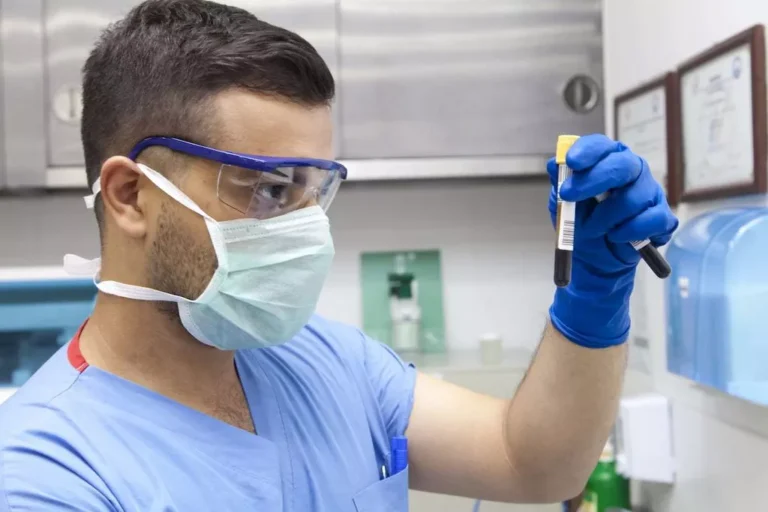
There are several alcohol intervention strategies available, each one with a unique approach. Regardless of the boundaries that are set, the most important part is to follow through. Setting boundaries that are not followed through does not help encourage safe behavior and, unfortunately, may teach the individual that there is no “real risk” for their behaviors.
I’m In Recovery

It also may be right to ask your loved one to seek support from a group such as Alcoholics Anonymous. If you think it’s important to have someone involved but worry that it may create an issue during the intervention, consider having that person write a short letter.
Steps Involved in an Intervention
- Along with professional guidance, the steps below can help provide an outline and provide important things to consider when planning an intervention for your loved one.
- This process allows the professionals to assist in guiding appropriate language, wording, and body language for everyone in a way that promotes the feeling of concern versus judgment.
- The groups for family and friends listed in the “Resources” section may be a good starting point.
- In relation to treatments that were not delivered by a practitioner, were not in-person and were individual, five effective elements were present.
- But when it comes to addiction, the person with the issue often struggles to see there’s an issue.
Certain medications have been shown to effectively help people stop or reduce their drinking and avoid a return to drinking. Motivational enhancement is conducted over a short period of time to build and strengthen motivation to change drinking behavior. The therapy focuses on identifying the pros and cons of seeking treatment, forming a plan for making changes in one’s drinking, building confidence, and developing how to do an intervention for an alcoholic the skills needed to stick to the plan. Treatment may involve a brief intervention, individual or group counseling, an outpatient program, or a residential inpatient stay. Working to stop alcohol use to improve quality of life is the main treatment goal. Regarding the treatments that were delivered by a practitioner, in person and included the involvement of relatives, two effective elements were found.

Support & Treatment
A third drug, the opioid receptor antagonist naltrexone, was approved for the treatment of alcohol dependence by the FDA in 1994. Later, a monthly extended-release injectable formulation of naltrexone, developed with the goal of improving patient adherence, was also approved by the FDA in 2006. Naltrexone reduces craving for alcohol and has been found to be most effective in reducing heavy drinking (25). The efficacy of naltrexone in reducing relapse to heavy drinking, in comparison to placebo, has been supported in numerous meta-analyses (23–25), although there is less evidence for its efficacy in supporting abstinence (25). Fewer studies have been conducted with the extended-release formulation, but its effects on heavy drinking, craving, and quality of life are promising (29, 30). Common side effects of naltrexone may include nausea, headache, dizziness, and sleep problems.

3. Inclusion Criteria
Ultimately, choosing to get treatment may be more important than the approach used as long as the approach avoids heavy confrontation and incorporates empathy, motivational support, and a focus on changing drinking behavior. More resources for a variety of healthcare professionals can be found in the Additional Links for Patient Care. Similarly, at times when delivering a full brief intervention isn’t feasible, you can lay the groundwork for change by making a simple statement connecting alcohol use with one or more of the patient’s health conditions, then following up at the next visit.
- These models will typically begin with planning sessions, rehearsals, performing the actual intervention, and then following up on the effects/outcome of the intervention.
- With prior notice, an alcoholic family member may simply refuse to show up.
- We also lack a basic understanding of how individuals recover from alcohol use disorder in the absence of treatment and what neurobiological, psychological, social, and environmental factors are most important for supporting recovery from alcohol use disorder.
- Professional counseling can help them manage problems that contribute to substance abuse.
- Additional details on the FDA-approved medications and other medications tested in clinical research settings for the treatment of alcohol use disorder are summarized in Table 2.
Although the exact mechanisms of acamprosate action are still not fully understood, there is evidence that it targets the glutamate system by modulating hyperactive glutamatergic states, possibly acting as an N-methyl-d-aspartate receptor agonist (22). The efficacy of acamprosate has been evaluated in numerous double-blind, randomized controlled trials and meta-analyses, with somewhat mixed conclusions (23–26). Other less common side effects may include nausea, vomiting, stomachache, headache, and dizziness, although the causal role of acamprosate in giving these side effects is unclear. New directions for behavioral treatment development include a greater focus on identifying effective elements of behavioral treatments and on the components of treatment that are most critical for successful behavior change (89, 113). Studies investigating the effects of specific treatment components are critical for refining treatment protocols to more efficiently target the symptoms of alcohol use disorder.
Support Your Recovery
- An intervention can motivate someone to seek help for alcohol or drug misuse, compulsive eating, or other addictive behaviors.
- In primary care, teams that include nurses and other non-physician providers are increasingly used for alcohol screening.
- Many inpatient programs accommodate their patients with 24/7 medical oversight and provide access to on-call medical and psychiatric services during their stay.
- A sure way to reduce the effectiveness of an alcohol abuse intervention is to approach it in a manner that will automatically increase resistance and defensiveness in the individual with the alcohol use disorder.
- In an intervention, it is critical that people approach the person with love and genuine care.
- The last author (AR) also screened 20% of all the records (titles, abstracts and full texts).
Do your research ahead of time to help identify effective communication strategies that can work for your loved one and your family. Explore different interventionists with a focus on those who have experience working with families that share similar challenges. Many interventionists will personally bring the individual to treatment regardless of location. This might mean purchasing flights or planning travel in advance for the individual and the professional.
With this information more targeted interventions for alcohol use among older adults could be developed. An intervention is a carefully planned process that family and friends can do, working with a doctor or another health care professional, such as a licensed alcohol and drug counselor. An intervention professional, also known as an interventionist, https://ecosoberhouse.com/ also could direct an intervention. It sometimes includes a member of your loved one’s faith community or others who care about the person struggling with addiction. Therefore, people who take these medications can also participate in mutual support groups that advise members not to replace one drug of addiction with another.
Take Our Substance Abuse Self-Assessment
Historically, naltrexone’s package insert has been accompanied by a risk of hepatotoxicity, a precaution primarily due to observed liver toxicity in an early clinical trial with administrating a naltrexone dosage of 300 mg per day to obese men (31). However, there is no published evidence of severe liver toxicity at the lower FDA-approved dosage of naltrexone for alcohol use disorder (50 mg per day). Alcohol withdrawal symptoms may include anxiety, tremors, nausea, insomnia, and, in severe cases, seizures and delirium tremens. Although up to 50% of individuals with alcohol use disorder present with some withdrawal symptoms after stopping drinking, only a small percentage requires medical treatment for detoxification, and some individuals may be able to reduce their drinking spontaneously.
